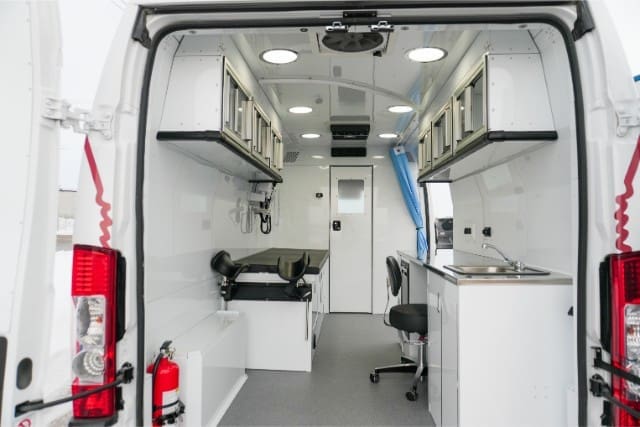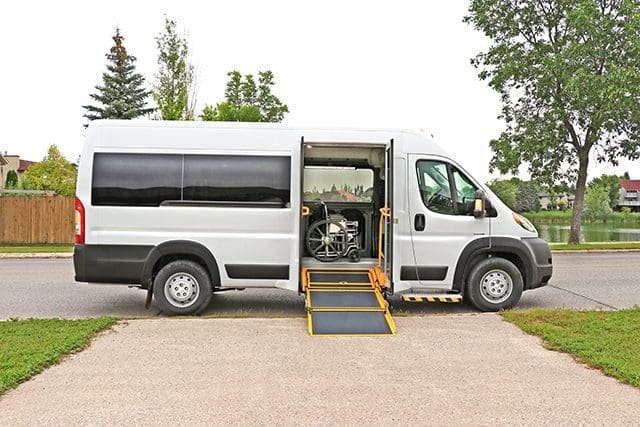So, you’ve been tasked with purchasing an accessible vehicle for your organization. You know you need an option that can transport a large group of people, but you’re not sure if you should get an accessible bus or another accessible vehicle.
And that question is what landed you here.
At MoveMobility, we have full size van options that feel similar to a bus, but we do not sell buses. And there’s a reason for that.
Because of their capacity capabilities, accessible buses can be a great option for transit service providers, but the problems can significantly outweigh the pros.
This is why, in this article, you’ll learn the top 5 problems organizations like yours experience with accessible buses, along with some alternative options that provide the convenience of a bus without the hassle.
If you’d like to learn about this by watching instead of reading, check out the video below!
1. An accessible bus needs a lot of maintenance to run properly
A wheelchair bus is a bus body that has been mounted onto a light or heavy-duty chassis. The bus is then upfitted, and either a ramp or a lift is installed. A bus is typically over 25 feet long, around 9 feet wide, and around 10 feet tall.
A bus needs more maintenance than an average wheelchair accessible vehicle. This is because a bus has had more extensive conversions to make it wheelchair accessible.
Accessible buses do not have the same lifespan as factory-built vans because they are made by mounting a bus body onto a vehicle chassis.
Because of this, the following issues can arise:
- If the bus has a wood floor, it may bend and warp over time
- The bus frame can be prone to rust
- Windows can become rattly and loose
- Heat and air conditioning aren’t always adequate to keep a large bus space warm/cool
- To put it simply: the more modifications made, the more maintenance the vehicle will need
2. An accessible bus can be difficult to drive and require a specialized license that is hard for drivers to get
A bus can be difficult to drive because it is a large vehicle, making it hard to drive down narrow streets.
A bus also requires a special license to drive it–usually a Class 4 license (or a Class F in Ontario), but be sure to check your specific license requirements based on the province you live in.
This means your organization will have to hire a driver with this specialized license. In 2022, there was an extreme shortage of bus drivers across Canada, so you may have extreme difficulty finding a certified bus driver for your organization.
3. An accessible bus can be difficult for walker users and cane users to get in and out of
A bus is generally accessible for walk-on riders and wheelchair users, but it can sometimes have a lowered floor or multiple levels inside it, which might require riders to step up to get into a seat.
Often, the only entryways are steps or a wheelchair lift, meaning anyone with a walker or someone with limited mobility who can’t climb steps may have difficulty getting in and out of the bus.
4. An accessible bus can result in a negative rider experience
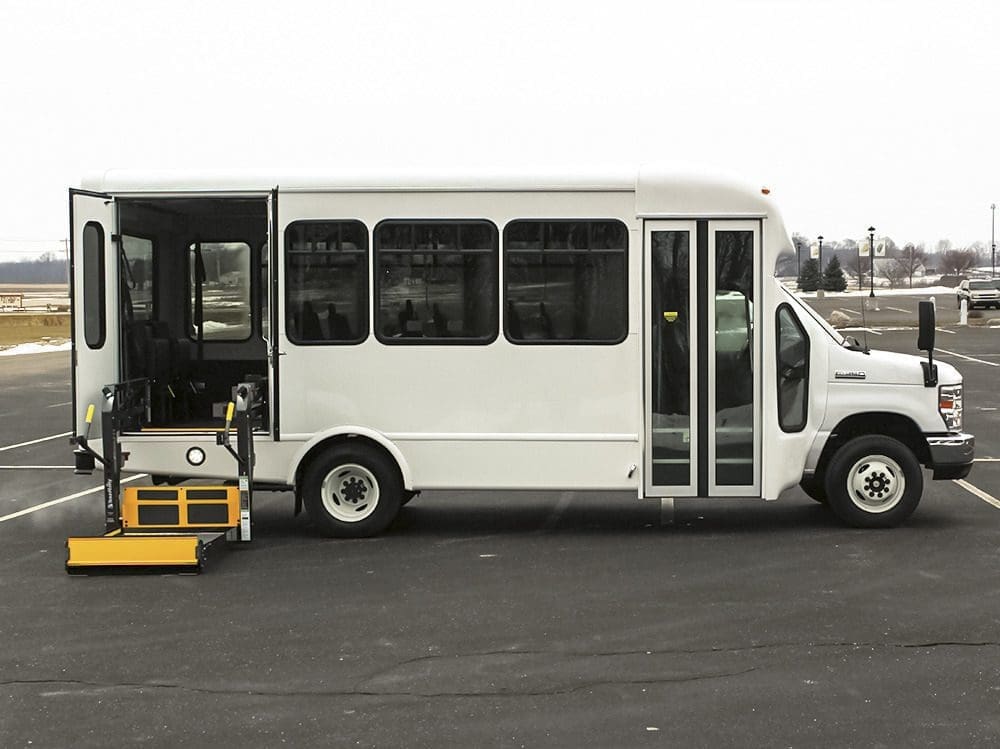
Because buses are heavily modified, riders often complain they are loud, bumpy, and cold.
This can be an issue for any passenger, but specifically, one who struggles with noise sensitivity and regulating their body temperature.
When you’re responsible for choosing an accessible vehicle for your passengers, you need to consider what the rider experience will be like for those passengers.
For example, imagine you are using an accessible bus to get to a doctor’s appointment. You use a walker, and you find it difficult to lift up your leg to climb steps. To get inside the bus, you have two options: use the lift, which will suspend you 3 feet in the air and cause anxiety, or use the steps. You decide to use the steps, and after some painstaking maneuvering, you’re on the bus. You find a seat and release a long, relieved breath.
But now, as the driver begins to roll the bus forward, you hear a rattling noise from the window next to you. You’re already noise-sensitive, and the rattling is so loud it’s nearly painful.
The driver hits a bump, and your body jolts forward, sending a spike of pain down your neck.
But worst of all is the temperature. Your limited mobility means your body struggles to regulate temperatures, and you’re getting very cold very quickly.
This is a reality for many different passengers who use cutaway buses for accessible transportation. Especially living in Canada, using a bus for accessible public transportation can be difficult. Snow and ice build up on sidewalks and can make it challenging for a wheelchair-user to get inside the bus.
When you’re responsible for choosing an accessible vehicle for your organization, you’re also responsible for providing a safe and comfortable experience for the vulnerable people under your care. You may find a full size van better suits your organization’s needs.
5. An accessible bus can cost your organization a lot in the long run
An accessible bus typically costs $120,000- $200,000 initially, but maintenance, repair, and fuel costs add up to cost much more over the life of the vehicle.
If your organization requires a slim budget, you likely won’t want to go with a bus. Instead, you may find that a full size wheelchair van better suits your budget.
What are some accessible bus alternatives?
While we don’t sell any buses at MoveMobility, we’ve created a few different options for organizations like yours that need the convenience of a bus without the hassle: the T6, the P5, and the P6 accessible vans.
The T6 accessible van

It’s well-known in the accessible vehicle industry that Handi Transit, Urban Transit, and Adult Day Care organizations struggle with heavily modified cutaway buses.
They have high repair costs and minimal interior flexibility. The T6 is the cost-efficient solution for organizations that need bus functionality with the cost savings and flexibility of a van.
With the T6, a specialized license may be required.
The P5 accessible van
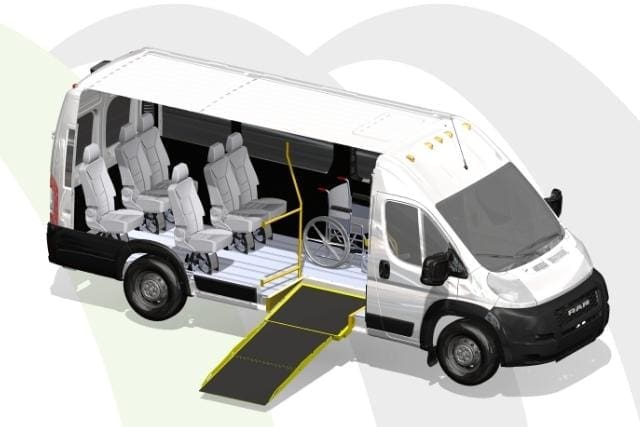
MoveMobility’s P5 wheelchair van is a popular option for accessible transportation providers downsizing from a large cut-away bus to a more efficient, flexible vehicle option.
The P5 can take up to 10 ambulatory passengers, 4 wheelchairs, or a combination of both, and is available with side entry or rear entry ramp access.
The P6 accessible van
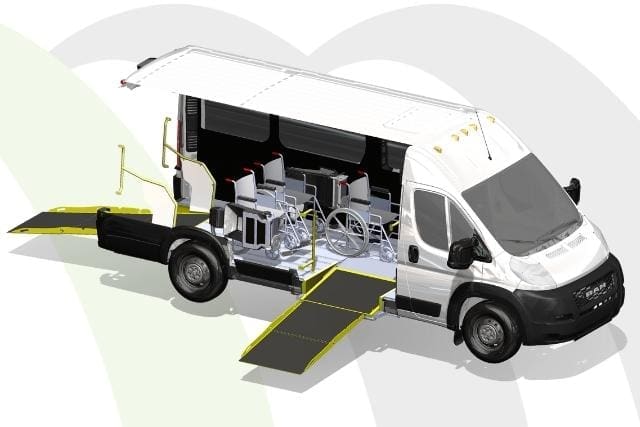
MoveMobility’s P6 wheelchair van is also a popular option for accessible transportation providers downsizing from a large cut-away bus to a more efficient, flexible vehicle option.
The P6 provides side entry and rear entry access for walk-on and mobility passengers and can take up to 10 ambulatory passengers, 3 wheelchairs, or a combination of both.
With the P5 and P6 full size vans, there is no additional licensing required.
Your next steps to learning the top 5 problems with an accessible bus
You came to this article to learn the top 5 problems with accessible buses.
Now, you know what the issues are, why they’re important to consider, and some bus alternatives you can check out.
If you’re still not sure if you should get a bus or a full size van, get a needs analysis from a MoveMobility expert today.
Or check out these related resources:


